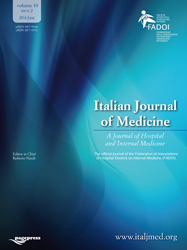Exploring some pro-inflammatory cytokines and adipokines as novel biomarkers in polycystic ovary syndrome
All claims expressed in this article are solely those of the authors and do not necessarily represent those of their affiliated organizations, or those of the publisher, the editors and the reviewers. Any product that may be evaluated in this article or claim that may be made by its manufacturer is not guaranteed or endorsed by the publisher.
Authors
Non-communicable diseases are more likely to affect women with polycystic ovarian syndrome (PCOS), in particular, mostly ascribed to the existence of low-grade chronic inflammation brought on by adipokines and proinflammatory cytokines. Angiopoietin-2, lipocalin-2, adipsin, and interleukin (IL)-22 concentrations in women with PCOS were assessed in this study, and their levels were compared to those in a healthy control group. Blood samples were obtained from outpatient and private gynecological clinics, as well as primary healthcare settings, from 55 women diagnosed with PCOS and 35 healthy control women. The serum concentrations of proinflammatory cytokines and adipokines were evaluated using the enzyme-linked immunosorbent assay technique. The data revealed that serum concentrations of angiopoietin-2, lipocalin-2, adipsin, and IL-22 were markedly increased in the PCOS cohort relative to the control cohort. Lipocalin-2 revealed a substantial positive correlation with adipsin, angiopoietin-2, and IL-22; likewise, angiopoietin-2 revealed a large positive correlation with adipsin and IL-22. Receiver operating characteristic curve analysis indicated that both lipocalin-2 and adipsin exhibited enhanced diagnostic efficacy for PCOS [area under the curve (AUC)=0.8518; AUC=0.8103, respectively], while angiopoietin-2 and IL-22 demonstrated moderate diagnostic significance for PCOS (AUC=0.7476; AUC=0.7340, respectively). Proinflammatory cytokines and adipokines showed significant diagnostic potential for identifying PCOS and may serve as markers for screening, thereby enhancing diagnostic accuracy for PCOS. These results suggest that lipocalin-2, adipsin, angiopoietin-2, and IL-22 could be utilized as biomarkers for assessing the risk of PCOS.
How to Cite

This work is licensed under a Creative Commons Attribution-NonCommercial 4.0 International License.






